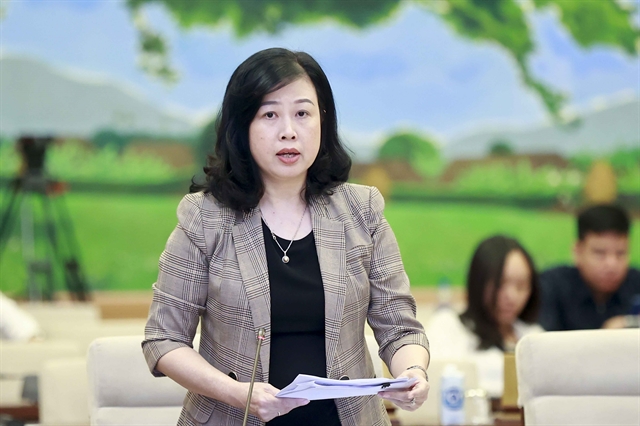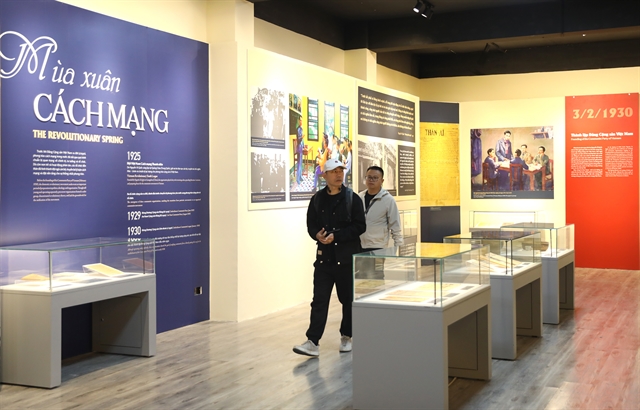 Opinion
Opinion

 |
Dr Mattias Larsson. Photo courtesy of Family Medical Practice |
Dr Mattias Larsson*
Hiền is an energetic one-year old child. However, in the last few weeks, she has been tired and pale and has eaten less. The parents went to the local doctor who examined her, diagnosed an ear infection, and gave antibiotic treatment. After several days it was however clear that the treatment did not have the intended effect, she was still tired and pale, and she also developed diarrhea.
Thủy, Hiền’s mother had heard that Family Medical Practice had good paediatric care. When arriving they met the paediatrician, who examined her and found that she was pale but alert otherwise normal findings. The complete blood count showed that Hiền had severe anemia with a hemoglobin (Hb) of only 57 g/L and small red blood cells.
The parents asked what could have caused the anemia. The doctor explained that common causes are: Decreased production of red blood cells, consumption, or hemolysis, and bleeding. The paediatrician explained that as Hiền was not more affected the severe anemia had probably existed for a long time.
To understand if there is some hereditary condition the pediatrician asked about the family history. Both the mother and an older sister have had anemia but not severe, so they didn’t think much more about it. The doctor asked if they had heard about thalassemia, which they recognised as the name of the condition they had been diagnosed with.
The paediatrician explained that thalassemia is one of the most common hereditary diseases. It is caused by mutation of genes responsible for hemoglobin synthesis. The most common mutations are alpha-thalassemia and beta-thalassemia. The severity depends on the number of mutations. The alpha chain of hemoglobin is encoded by two pairs of genes, while the beta chain has only one pair. The genes can be inherited from one parent or two.
To diagnose the thalassemia, the doctor ordered Hemoglobin electrophoresis and iron in the blood. To prepare for blood transfusion the blood group was checked. The parents wanted to know more, about what kind of thalassemia Hiền has and what treatment would be recommended. The doctor further explained:
Alpha-thalassemia who have the gene from one parent (heterozygotes) usually don’t have anemia. Those who have genes from both parents (homozygotes), with defects in 2 genes, develop alpha thalassemia minor with mild anemia but seldom need treatment. Those with defects in three genes develop hemoglobin H disease with severe anemia and an enlarged spleen. A defect in all four genes often causes foetal death.
Beta-thalassemia minor occurs in those with genes from one parent (heterozygotes), with mild to moderate anemia. Beta-thalassemia is major in those with two beta-thalassemia genes from both parents (homozygous), which cause severe anemia and affect the physical development, need for regular blood transfusions and complications in several organs.
Globally about 7 per cent carry thalassemia genes. Alpha-thalassemia occurs mainly in populations from Southeast Asia, while beta-thalassemia is most common in the Mediterranean region, Arab countries and India. In Việt Nam, the prevalence of Alpha thalassemia is 11 per cent and beta-thalassemia 2 per cent.
When the tests were done it showed that Hiền had beta-thalassemia major. She was planned to come for a blood transfusion every three weeks to maintain an Hb >95 g/L and treatment to control the blood iron levels. The doctor explained that with adequate treatment and good compliance, the expected lifespan is normal.
The parents asked if there was any treatment that could cure the beta-thalassemia major. The doctor said that stem cell transplantation could be a cure, however, the treatment had potentially serious side effects and a matching donor had to be found.
Thủy asked if there was a risk that if they had more children, that they might also have thalassemia. The doctor explained that thalassemia is a preventable disease if couples screen, or if already pregnant the fetus may be screened. The parents said that they didn’t know this before they married and had children. Also, if they had known they are not sure that it would have changed much as they love each other and the kids. But if they became pregnant again, they would certainly consider screening. Family Medical Practice
*Dr Mattias Larsson is a paediatric doctor at Family Medical Practice and associate professor at Karolinska Institutet and has a long experience in research on infectious diseases. He has worked with the Oxford University Clinical Research Unit and the Ministry of Health of Việt Nam. He is fluent in English, Swedish, Vietnamese, German, and some Spanish.
Visit Family Medical Practice Hanoi 24/7 at 298I Kim Mã Street, Kim Mã Ward, Ba Đình District.
To book an appointment, please call us at (024).3843.0784 or via Whatsapp, Viber or Zalo on +84.944.43.1919 or email hanoi@vietnammedicalpractice.com.
FMP’s downtown location in Hồ Chí Minh City is in Diamond Plaza, 34 Lê Duẩn Street, Bến Nghé Ward, District 1, and 95 Thảo Điền Street, District 2. Tel. (028) 3822 7848 or email hcmc@vietnammedicalpractice.com.




